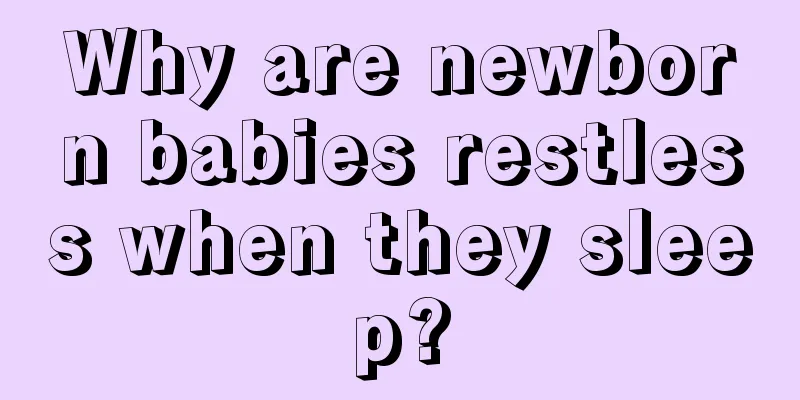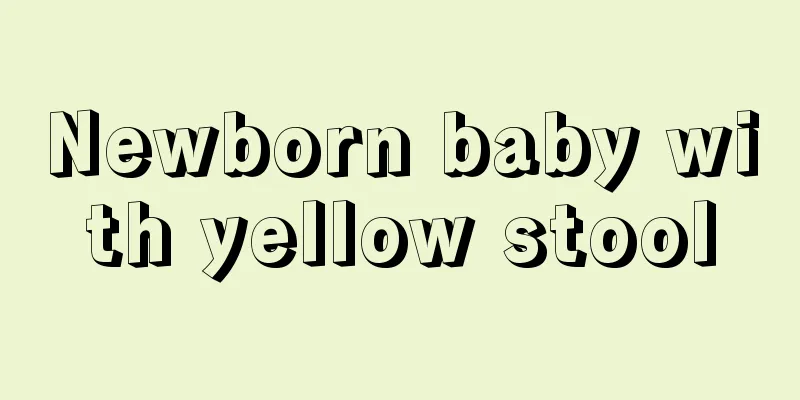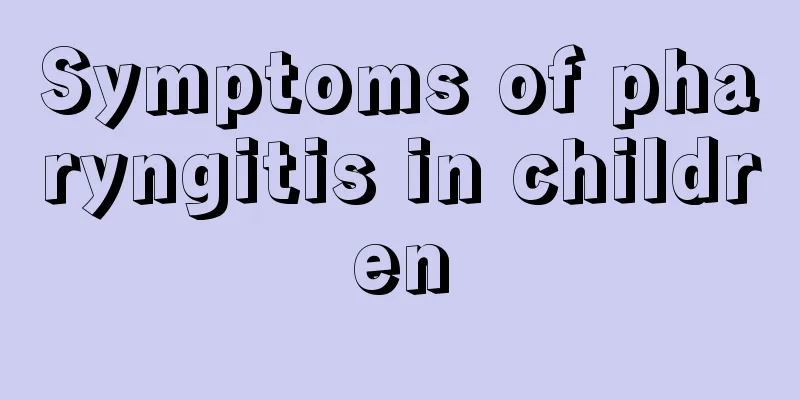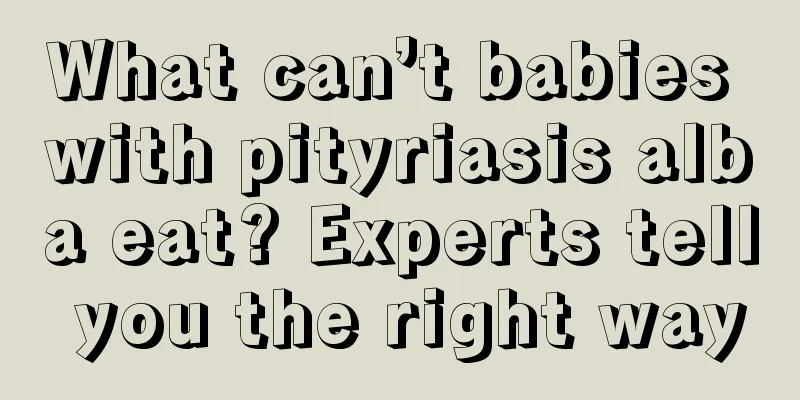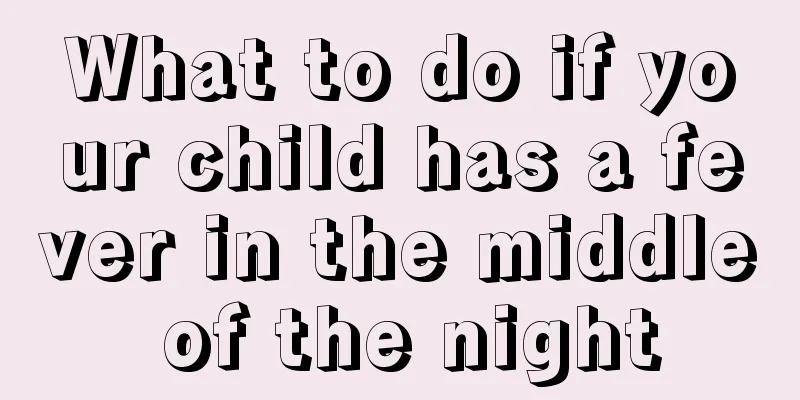What should I do if my baby doesn't smile for 3 months?
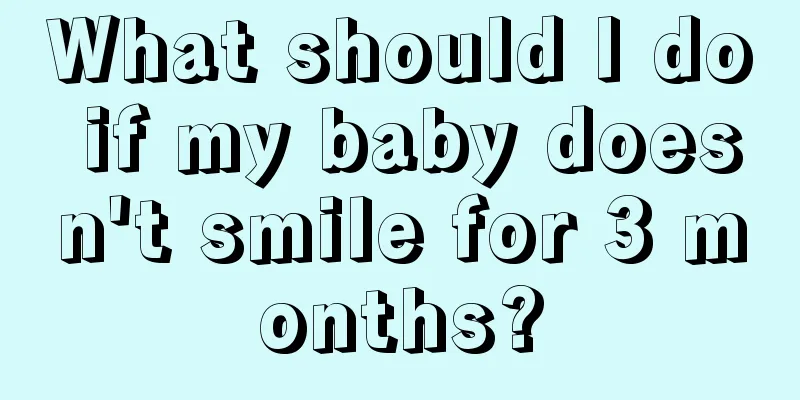
|
The most common action and expression of a newborn baby is crying. As they grow older, they will start to laugh, from smiling to giggling, and various sounds will come out of their mouths. We can see the development of the baby from the growth stages. Most babies will smile when they are more than two months old, but some babies will not smile at three months old, and their facial expressions are very stiff, which makes parents worry about their development in this aspect. So what should we do if the baby does not smile at three months old? Judging from the baby's development process, the laughing reaction usually appears at about 3 months old. As long as he is awake, he will laugh happily when he sees familiar faces of his family or new pictures and toys, and say "haha" with his mouth, swing his arms and kick his legs, and can be said to be dancing. In addition, when he is well fed and well rested and in good spirits, he will smile automatically even without any external stimulation. The former kind of laughter is called the "innocent happiness effect" and the latter kind is called "laughing without anyone around." The innocent happiness effect is the first step for an infant to interact with others. It is a leap in mental development and a benign stimulation to brain development. It is hailed as a ray of wisdom. As for laughing without anyone around, it is a psychological reaction of an infant after his or her physiological needs are met. Both types of laughter are beneficial to the development of the brain. Therefore, parents should have more contact with their babies and use happy expressions, language and toys to stimulate their innocent happiness. At the same time, they should pay attention to feeding, ensuring they are well fed and get enough sleep, and encourage them to laugh early and laugh more. This is a great trick for mid-term intellectual development and deserves the attention of young parents. Laughter is a kind of "organ gymnastics". Life cannot be separated from exercise, and the same is true for the development of babies. "Laughter is a good form of exercise, similar to marching in place." It is not only suitable for adults, but also for babies. When you laugh, your facial expression muscles move, and your chest and abdominal muscles participate in resonance, which not only activates the muscles, bones and joints, but also "masses" and "exercises" a variety of internal organs. It is praised by sports medicine experts as "organ gymnastics." Laughter relaxes the smooth muscles of the arteries, enlarges the lumen, and increases blood flow, so that all organs in the body can enjoy adequate blood supply and accelerate their development; chest muscle movement drives the expansion of the chest cavity, thereby increasing lung capacity, improving ventilation efficiency and promoting lung development; laughter promotes liver and bile duct motility, increasing bile secretion and helping liver development. At the same time, gastrointestinal motility is also enhanced, and the secretion of digestive juices is increased, which is beneficial to enhancing the digestive function and expelling gas in the intestines. It has a certain therapeutic effect on abdominal distension caused by weak digestive function and aerophagia. Ways to make your baby laugh 1. Pretend to eat their fingers. Most babies like their parents to pretend to gently bite their fingers, feet and necks. This loving nibbling action can effectively promote parent-child bonding. Even two-year-olds still like to suck their fingers. 2. Innocent and exaggerated movements. The more exaggerated the facial expression, the better. Babies like the attention of others. If you make a face at him, no matter how silly it is, he will not resist it. This is why many parents try hard to learn the skills of making faces after their baby is born. Sometimes even a sneeze may make your baby laugh. 3. Blow soap bubbles. Babies are very interested in the magical soap bubbles. Many babies will even crawl towards them and try to catch them when they see the bubbles. Moreover, blowing bubbles does not add any stress to parents, so it is economical and enjoyable for babies. What should I do if my baby can't laugh at 3 months old? It is normal for the baby to have a smiling expression on his face at this time. Some babies can't laugh for many reasons, including poor facial expressions and parents' failure to make the baby laugh. You can first tease the baby with toys that interest him, smile at the baby more, etc. The child will laugh after getting used to it. As the child gets older, he will make more expressions and laugh out loud. Parents can observe more and don't miss every growth of the baby. |
<<: Why can't a 15-month-old baby crawl?
>>: What should I do if my baby can't crawl for more than 7 months?
Recommend
What should you pay attention to in your baby's diet?
The baby's body is very fragile, so the baby ...
Symptoms of renal hematuria in children
In life, children’s illness is a common concern f...
What are the effects of dental deformity on children's health?
If your child has symptoms of tooth deformity, yo...
Symptoms of hemolytic uremic disease in children
Hemolytic uremic disease is a malignant disease t...
What are the dangers of ADHD?
Children's physical health is an issue that p...
How to prevent newborn spitting up?
Since the stomach and throat of a newborn baby ar...
What causes painful urination in young children?
Urinating is something everyone does every day. S...
What is the nebulizer formula for children's cold and cough?
It is okay to use physical and chemical methods t...
What are the symptoms of cerebral palsy in babies?
Many people have heard of the disease called cere...
What to do if baby's head gets dry skin
After a child is born, parents dare not touch the...
White spots appear on newborn's skin?
If white spots appear on the baby's body, par...
Causes of cloudy urine in children
Now some children have turbid urine. Some childre...
What kind of fruit is better for children with anemia?
Nowadays, many parents are complaining that their...
Weight gain patterns of infants and young children
The weight gain of infants and young children ref...
Ways for students to improve their memory
Every student hopes that his memory can be better...
